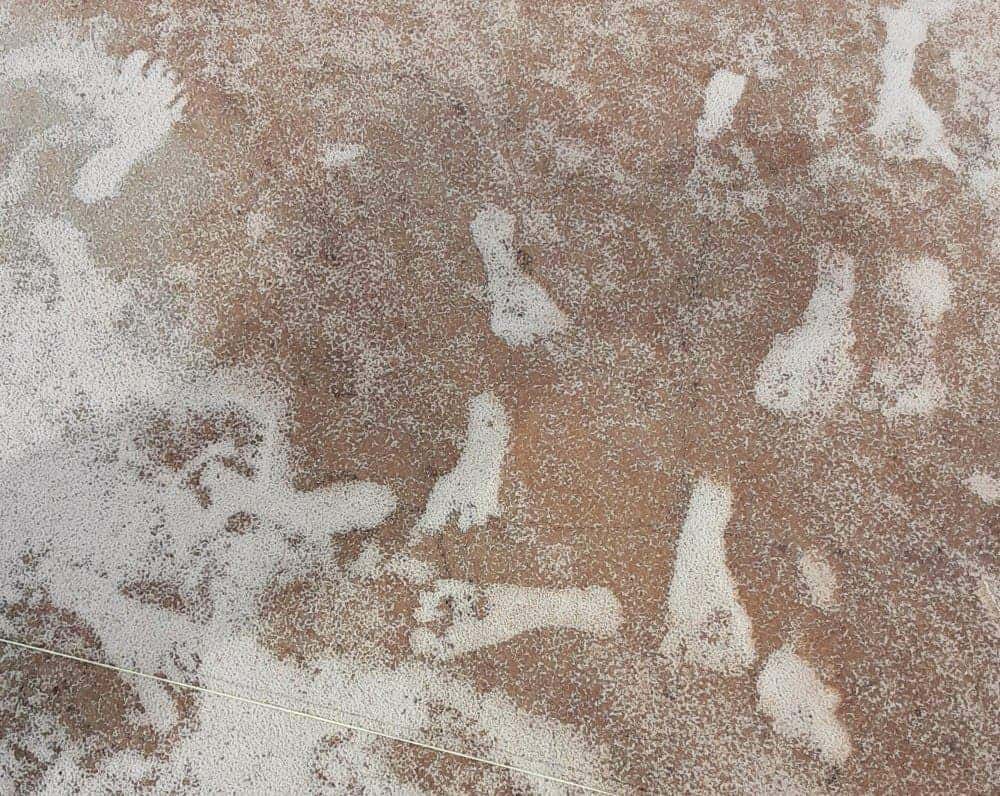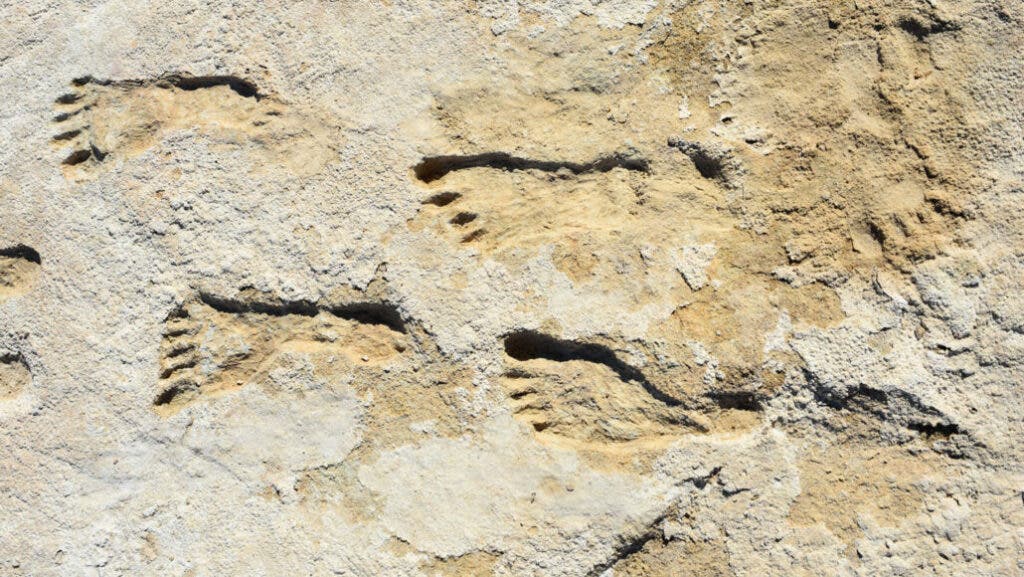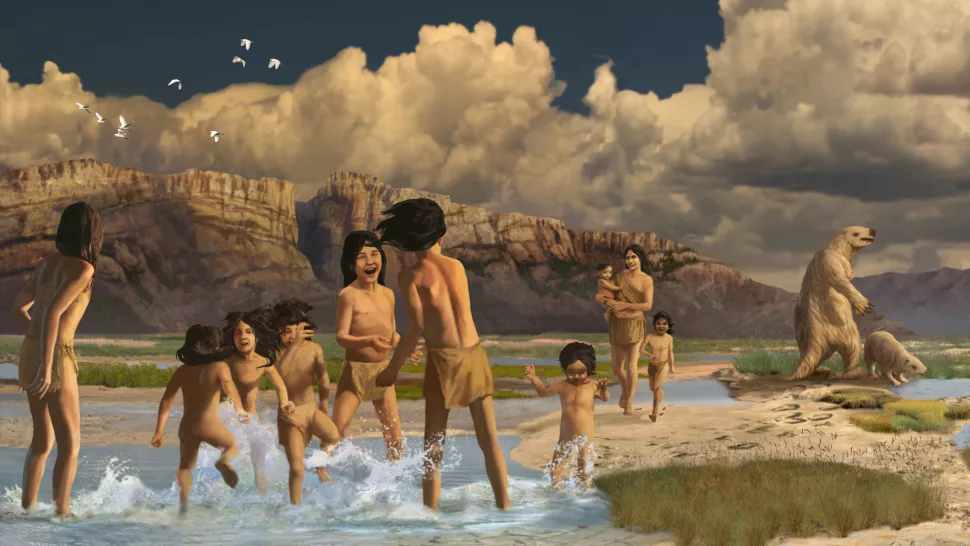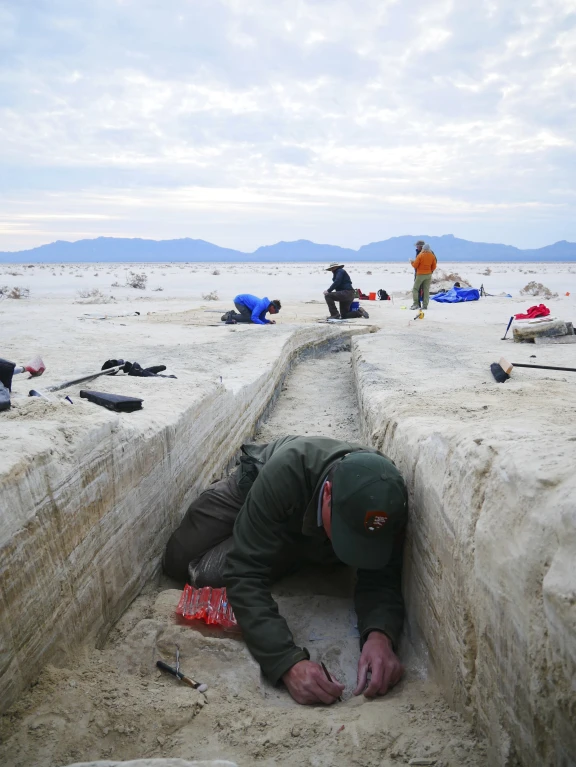
Many thousands of years ago, a group of people walked along the shores of an ancient lake in New Mexico’s White Sands National Park. In their wake, they left footprints that remarkably became fossilized — now considered the oldest direct evidence of human presence in the Americas.
In 2021, scientists estimated the age of the footprints at around 23,000 years old. Until then, the leading theory suggested that the first settlers crossed over after the “last glacial maximum” ended, roughly 16,000 years ago. This means humans arrived in the Americas much earlier than previously thought — perhaps as early as 30,000 years ago.
But the results also proved controversial. Many scientists were not convinced. They wondered if aquatic plant seeds used in the original radiocarbon dating could have absorbed ancient carbon from the lake, potentially skewing the timeline by thousands of years.
Now, a recent study has added two new lines of evidence that confirm the initial findings. With three totally different methods converging around a single age range, the story of the first people of the Americas has suddenly gotten a lot more interesting.
Strengthening the first footprints

For thousands of years, our ancestors ventured out of East Africa, moving in waves to populate distant lands. They conquered the vast landscapes of Eurasia, reached the southern coast of Asia, and even sailed to Oceania around 50,000 years ago. But the Americas were like a sealed vault, impenetrable for millennia.
So how did the first people arrive in the Americas? Most likely, they traveled from Central Asia, crossing the Beringia land bridge—a mammoth-inhabited plain between the Pacific and Arctic oceans, separating North America from the Russian Far East. This area is now swallowed by the sea.
The Last Glacial Maximum froze so much water that sea levels dropped dramatically, turning islands into peninsulas and underwater plains into valleys. During this cold spell, humans took advantage of the frozen expanse connecting Siberia to Western Alaska.
Artifacts like spearheads, commonly associated with the Clovis culture, suggest humans settled in North America around 14,000 years ago.
However, newer archaeological finds poke holes in the Clovis-first theory. Discoveries in central Mexico and various Brazilian sites point to human settlements that date back more than 20,000 years. This raises a fascinating question: Did humans arrive before the colossal glaciers of the last ice age made such a journey impossible?
This is why the White Sands footprints are so important. They’re nicknamed “ghost tracks,” these footprints appear only during the wet season, vanishing once the soil dries up.
Most intriguingly, the prints are mostly those of teenagers and children, hinting that young people were tasked with fetching water and other essentials, while adults were away hunting and foraging.
Previously, researchers working at White Sands found other ancient tracks left behind by children, alongside those of bear-sized giant sloths.

A fresh look at ghost tracks
The new study isolated about 75,000 grains of pure pollen from the same sedimentary layers as the footprints, a labor-intensive process but one that offers great precision for dating. The radiocarbon dating of terrestrial plants is considered more accurate than the dating of aquatic plants, according to experts.
Geologists at the United States Geological Survey also looked at the damage that had accumulated in the crystal lattice of the ancient quartz grains to arrive at an age estimate. Both methods, as well as the original 2021 dating, suggest the footprints were etched between 21,000 and 23,000 years ago.

These fossil footprints don’t just hint at early human activity. Alongside human imprints, the researchers discovered footprints of megafauna like big cats and dire wolves. Imagine the prehistoric drama that unfolded in what is now White Sands National Park—a stage where both predators and humans struggled to play their roles.
“White Sands is unique because there’s no question these footprints were left by people; it’s not ambiguous,” Jennifer Raff, an anthropological geneticist who was not involved in the new study, told the AP.
Why do these ancient imprints matter? They provide more than just a physical trace of humanity’s past—they offer a renewed understanding of how we peopled the planet.
Each footprint not only represents a step taken thousands of years ago but also a step forward in our collective quest to piece together the ultimate story of human history.
The new findings appeared in the journal Science.









